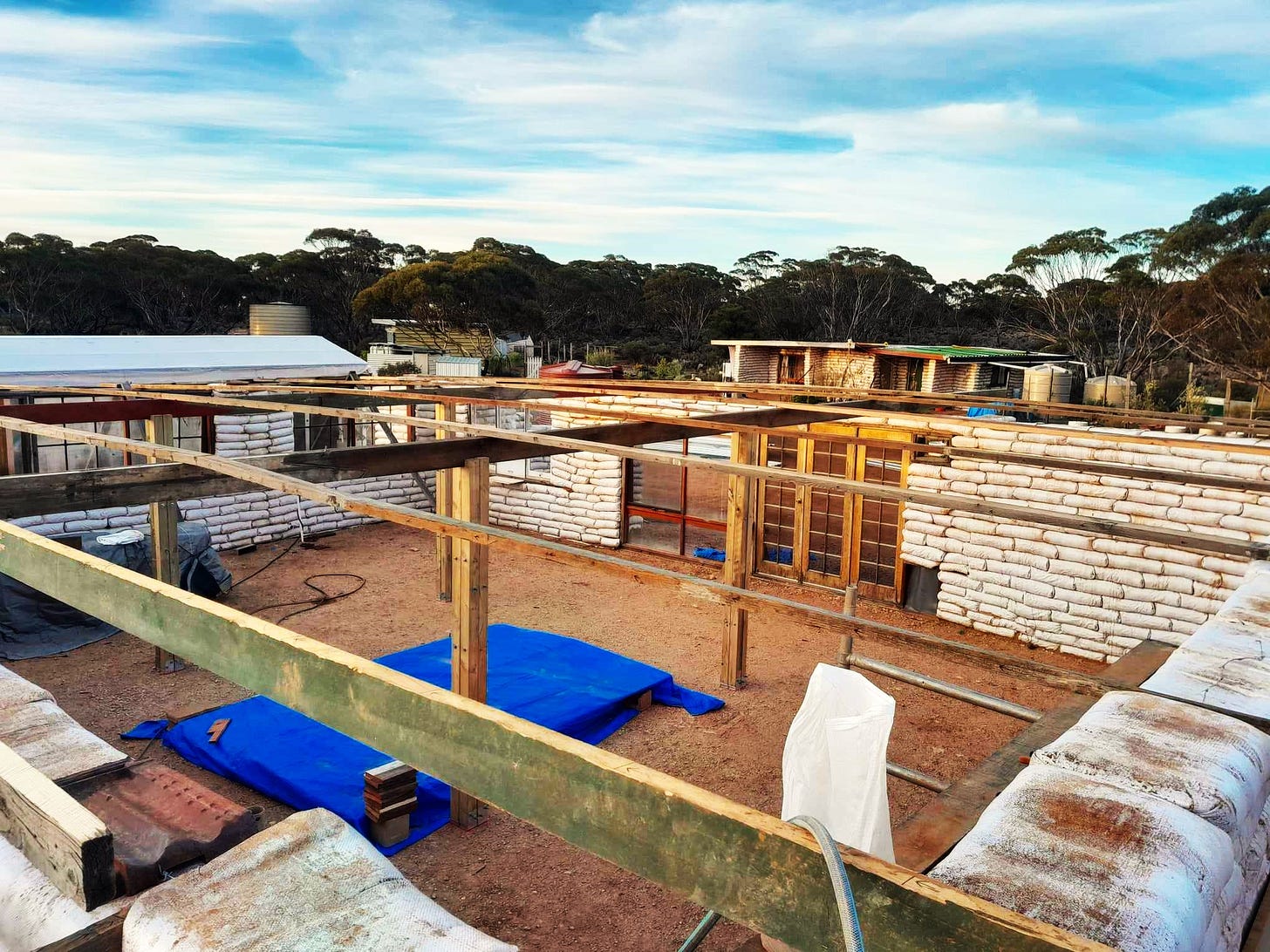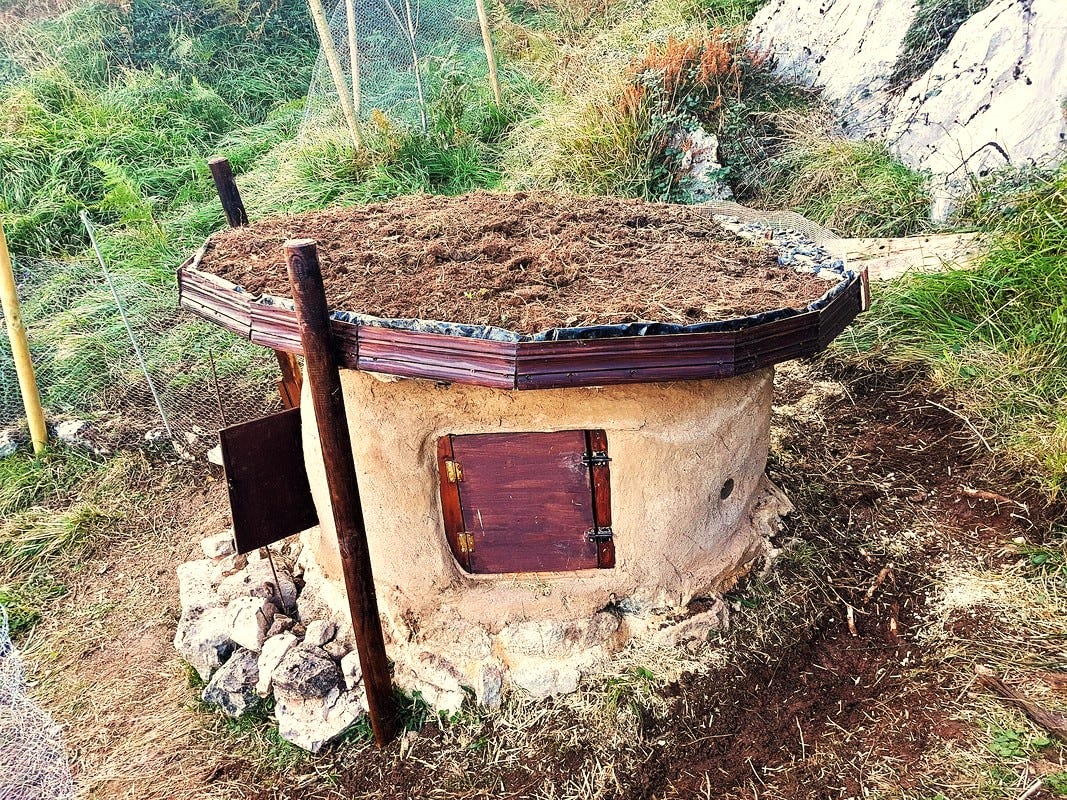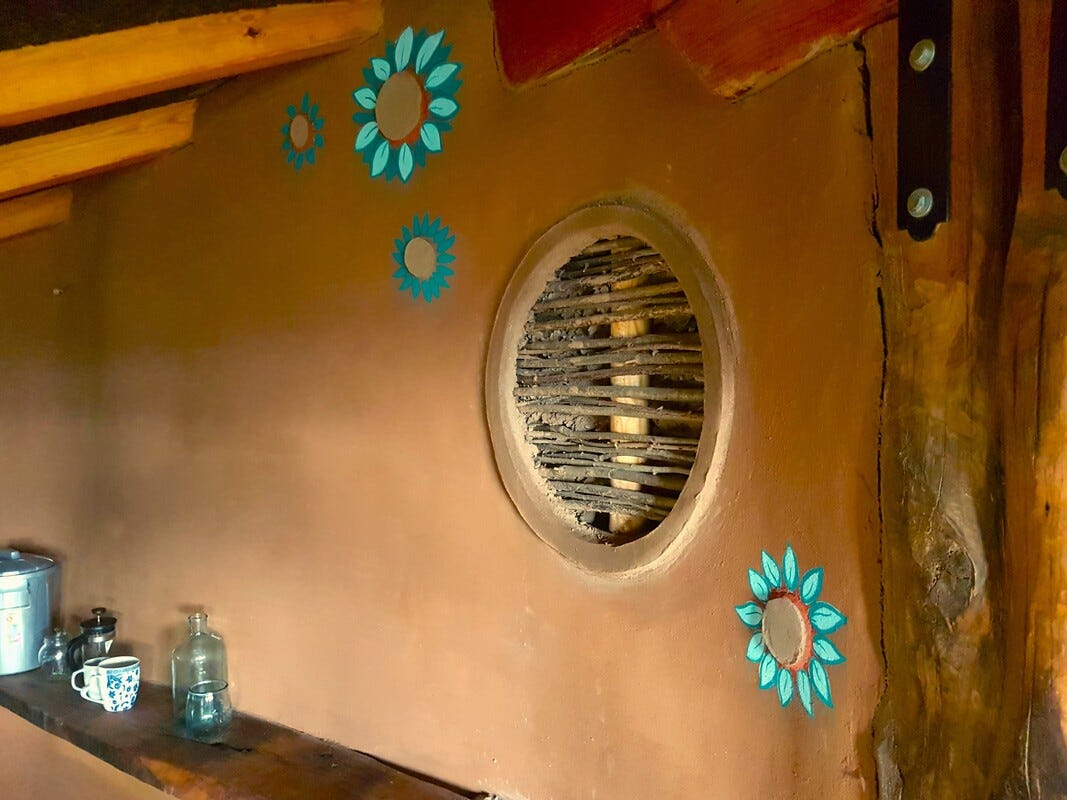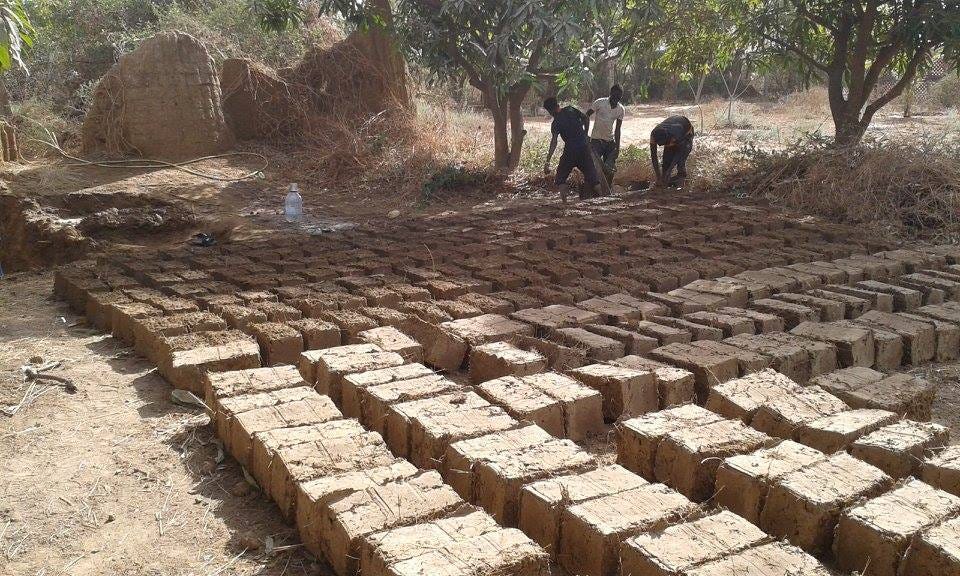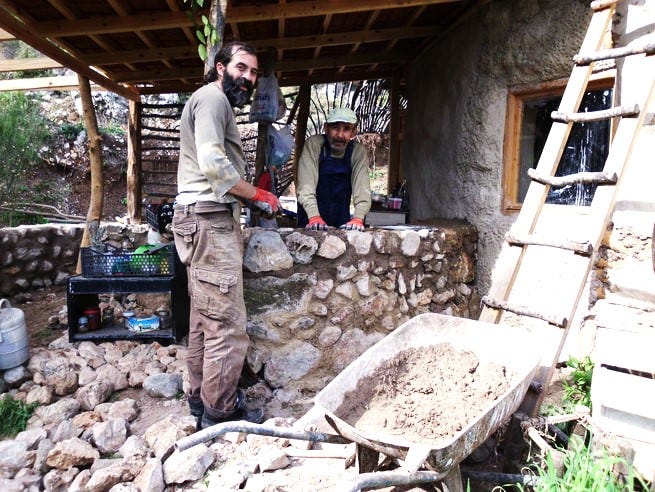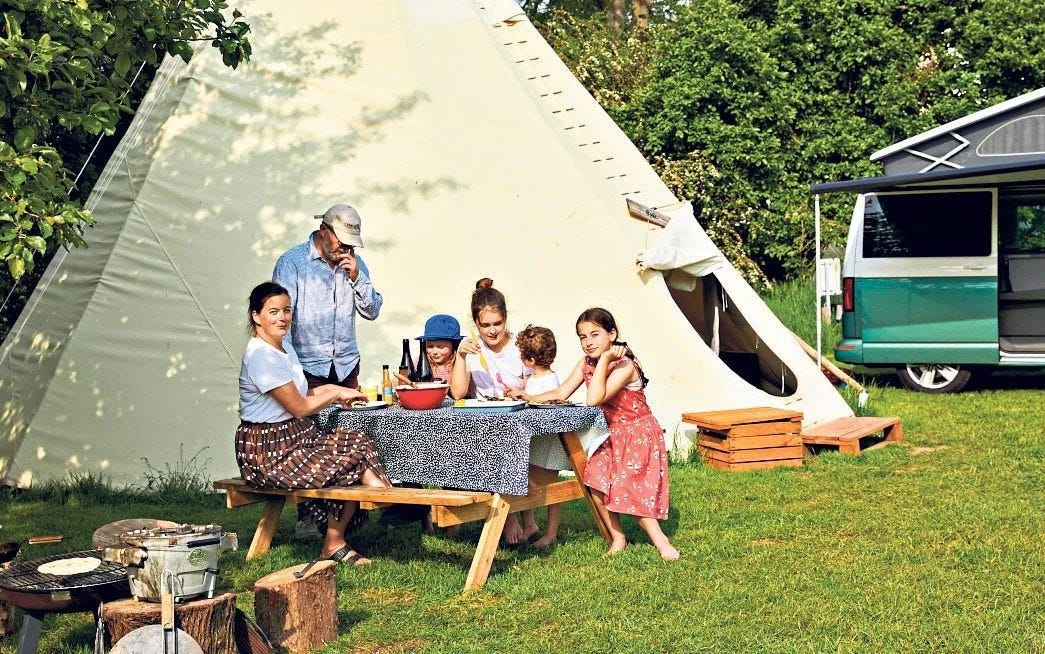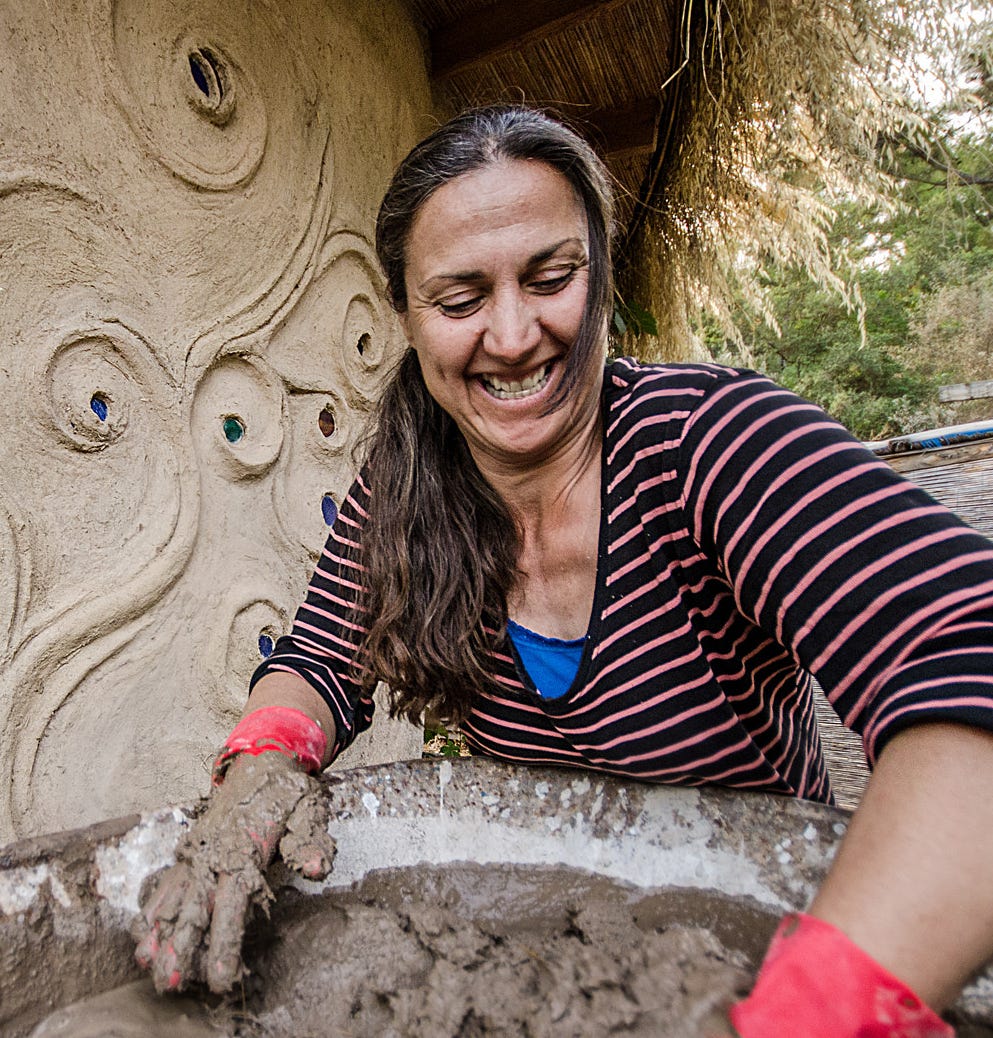Mud Home News, August 2024
Laying Earthbag Roofs, 4 Different Mud Techniques, and Off-Grid Camping Tips.
Annie’s Earthbag Castle in South Australia
Annie’s project is pretty phenomenal. Seeing a modest natural build is one thing, but seeing a project this size created in an off-grid setting is very impressive.
In this video, Annie shows us around her massive kitchen area where she is adding roof rafters. “I’ve bitten off more than I can chew,” she said to me the other evening when I chatted to her on Skype. He he, yes, I know that feeling only too well, though hey, I don’t think I ever bit off quite this much!
Roofs for Earthbag Houses
Let’s study the roof of this earthbag structure a little. You see, Annie has slightly gone off-piste with her roof rafters. Normally, you attach wooden pads or “cushions” under each rafter to stop it sinking into the bag. Or you add a bond beam (a solid wooden ring that locks in the top of the earthbag walls to stop them splaying), and then attach the rafters to the bond beam. You can see more about making roofs for earthbag houses here.
How did Annie lay the roof joists? When I looked at the photos, it seemed Annie had omitted the rafter pads (this was only partially correct). Why is Annie’s roof still sound? Firstly, because it’s a grid system. This is probably the safest option if you are a novice builder. When roof joists are screwed together in a grid-like form, they become tightly interlocked so that the whole rafter structure is one single unit. Secondly, she did actually add the pads, but smartly chose to do that only under the supporting beams, not each rafter. Good call!
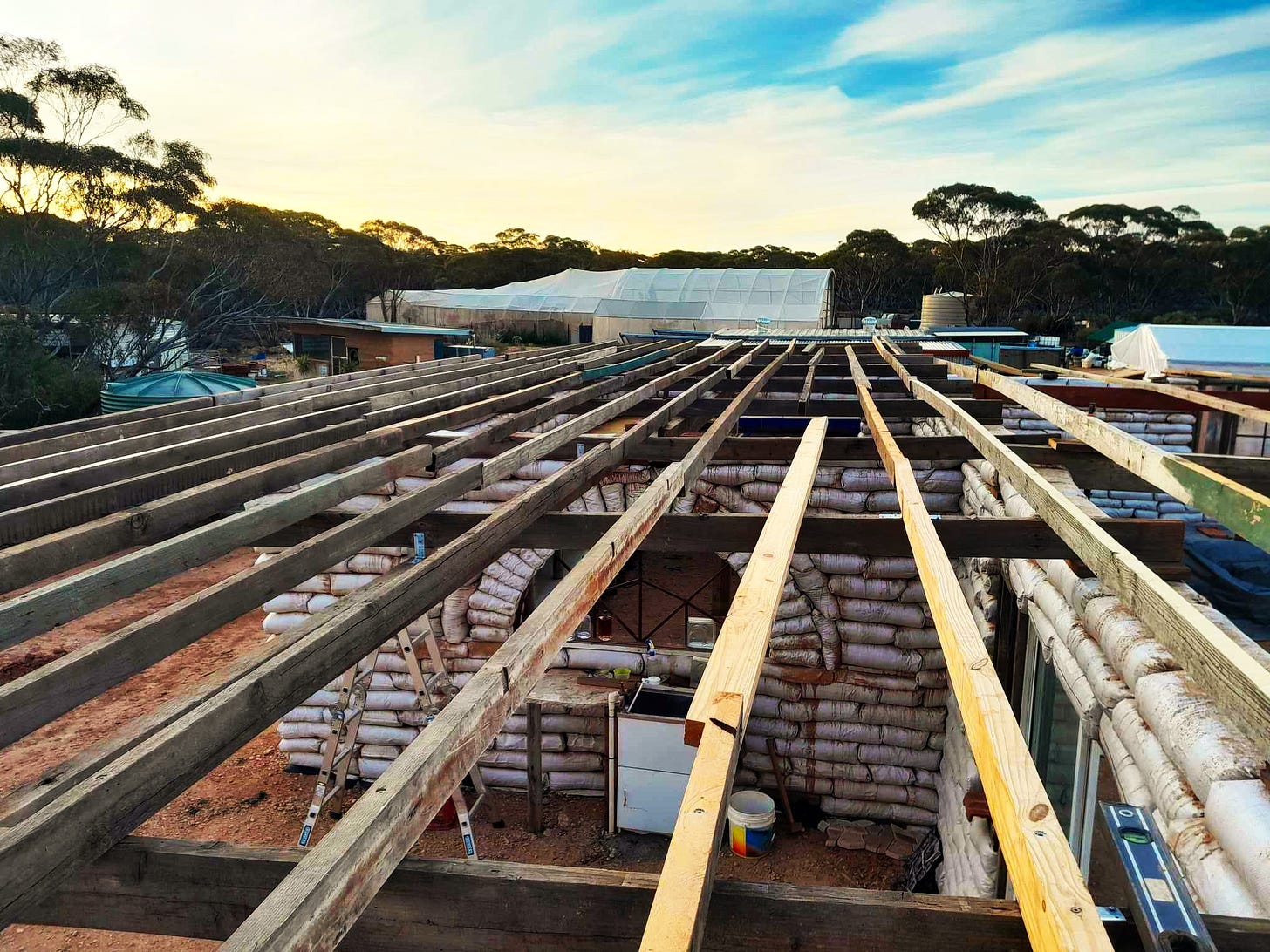
My workshops with Annie in Adelaide this October and November are now definitely going ahead, and as a result the Early Bird price has been extended until Sept 15th 2024, but we have limited places left on the Cob, Adobe, and Clay plaster course, so if you’re interested in that one, don’t wait around.
Cob, Adobe, Mud Mortar and Clay Plaster — Do You Know the Difference?
People lob the word “cob” around a lot, because hey, it’s a short and cute word that catches attention. In fact, while the material itself is very similar, there are many, many different techniques and applications using clay-based mixtures. Here are four of them:
Cob is a mud mixture which is used to build. It’s structural. You can have any size structure from a bench or pizza oven to a house, and it’s still cob.
Clay plaster (or render) is a natural wall coating. It’s not just aesthetic but also a very important protective skin for you building. If you have a natural home and coat it in Portland cement, you are doing it a massive disservice.
Adobe is another mud technique where a mud and straw mixture is poured into rectangular forms to create mud bricks.
Mud mortar is used to “cement” said mud bricks together. It can also be used to mortar stones.
Learn These Skills with Me
I’m going to be teaching these four applications in my upcoming cob and plaster workshop in Adelaide in November. There are just five spots left on that course, so if you’re interested book now.
And for those who can’t make it, here’s an article I wrote a few years back explaining how to turn clay plaster into cob.
Five Star Camping as a Guide to Off-Grid Good Times?
This might seem frivolous in these joyless, abstemious times. Isn’t the 21st century about shaving off the indulgent growth of late 20th century capitalism, donning a hair shirt, and eating locusts? I’ll tell you what: Even when I moved up to my Mud Mountain in Turkey with not much more than a tent and a pick, I knew how to enjoy life. Maybe it was exactly because I lived in Turkey, a place that has very little truck with puritanism, that I’d learned the art of living it up simply. I had filter coffee every morning, a nice little pool to sit in, and decent toilet paper:)
I think it’s really important to treat ourselves well in this life, especially if you are in the off-grid homestead game. It’s often hard work, and if you don’t watch out, all you’ve done is internalise the unkindness of the system at large. You don’t have to live in a mansion and create a skip full of rubbish each week to enjoy a little luxury.
The Tiny House Blog article below is a bit of summer fun. Many of the tips are simple, inexpensive little luxuries you can add to your off-grid life that make you feel like royalty instead of a serf.
You can of course view hundreds of free natural building tips and guides on my main website at The Mud Home. It is a free, open-source encyclopaedia of natural building knowledge. You can also buy the Mud Home how-to articles in a PDF package.
If you’d like to support The Mud Home, gain access to my private Mud Home podcast, and have a space to ask questions, consider joining us on Patreon.
Patrons have access to a whole archive of videos (from my barn project in Spain) and the Mud Home Podcast where I give a regular update on what I’m doing, as well as answering your questions.





